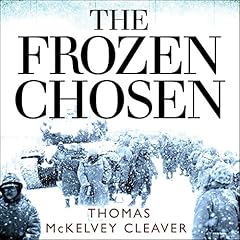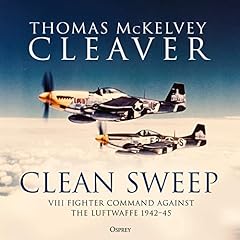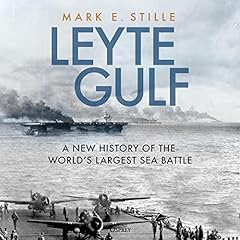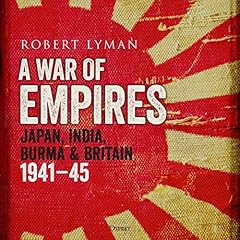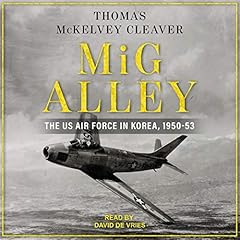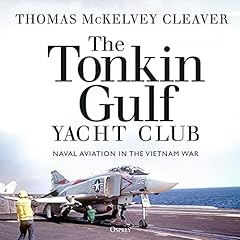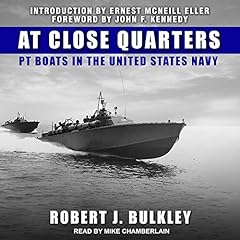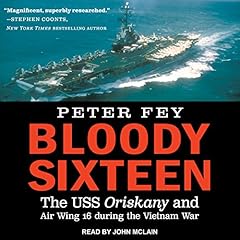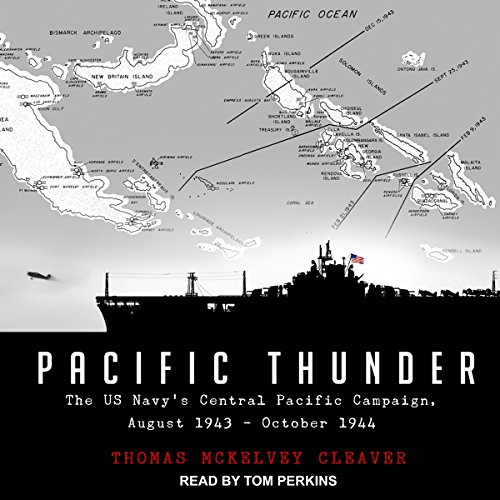
Pacific Thunder
The US Navy's Central Pacific Campaign, August 1943–October 1944
Failed to add items
Add to basket failed.
Add to wishlist failed.
Remove from wishlist failed.
Adding to library failed
Follow podcast failed
Unfollow podcast failed
£0.99/mo for first 3 months
 Prime members: New to Audible? Get 2 free audiobooks during trial.
Prime members: New to Audible? Get 2 free audiobooks during trial.
Buy Now for £21.99
No valid payment method on file.
We are sorry. We are not allowed to sell this product with the selected payment method
-
Narrated by:
-
Tom Perkins
About this listen
On 27 October 1942, four "Long Lance" torpedoes fired by the Japanese destroyers Makigumo and Akigumo exploded in the hull of the aircraft carrier USS Hornet (CV-8). Minutes later, the ship that had launched the Doolitte Raid six months earlier slipped beneath the waves of the Coral Sea 100 miles northeast of the island of Guadalcanal and just north of the Santa Cruz Islands, taking with her 140 of her sailors. With the loss of Hornet, the United States Navy now had one aircraft carrier left in the South Pacific, USS Enterprise (CV-6), herself badly damaged in the two previous days of the Battle of Santa Cruz.
For the American naval aviators, it would be difficult to imagine that within 24 months of this event, Zuikaku, the last survivor of the Imperial Japanese Navy aircraft carriers that had attacked Pearl Harbor, would lie at the bottom of the Philippine Sea north of Cape Engano on the island of Luzon, alongside the other surviving Japanese carriers, sacrificed as lures in a failed attempt to block the American invasion of the Philippines, and that the United States Navy's Task Force 38, composed of 16 fleet carriers, would reign supreme on the world's largest ocean.
©2017 Thomas McKelvey Cleaver (P)2017 TantorWhat listeners say about Pacific Thunder
Average customer ratingsReviews - Please select the tabs below to change the source of reviews.
-
Overall4 out of 5 stars
-
Performance5 out of 5 stars
-
Story4 out of 5 stars
- Martin Ogle
- 04-06-20
A good book, but...
My only minor criticism is I like my history books to be linear and not skip back and forth in time. As an example, when an aircraft or personality is mentioned, he tends to go over that persons or objects history in great detail.
Something went wrong. Please try again in a few minutes.
You voted on this review!
You reported this review!
1 person found this helpful
-
Overall5 out of 5 stars
-
Performance5 out of 5 stars
-
Story5 out of 5 stars
- Janet Jones
- 11-06-23
Interesting....
and an informative book it had me captivated right from the start. The narrator was very good.
Something went wrong. Please try again in a few minutes.
You voted on this review!
You reported this review!
-
Overall4 out of 5 stars
-
Performance4 out of 5 stars
-
Story3 out of 5 stars
- C Caesar
- 28-06-24
The overall chronological big picture seemed to be
I came to this book having listened Geffery Cox’s books on the Java Sea and the Guadalcanal Campaign and Robert Sern’s book on Coral Sea and listened to The Mirical of Midway. My idea was to continue to educate myself on the Pacific Campaign. Whilst well written and well-narrated I do have a number of issues with this history:
It is full of fascinating mini biographies of the characters and incredible anecdotes but does this at the expense of a chronological order. This made following the advance of the US Forces quite difficult and the overall story fairly confused.
There was not a huge level of detail from the Japanese point of view, unlike Cox’s books which give a blow-by-blow account from both sides; so the information must be out there. The fallout from this was a slightly jingoistic feel almost like the IJN were just targets and inferring the IJN was incompetent and foolish and gives little hint that that is far from the truth and for the first phase of the war they totally embarrassed the Allies.
This book mostly listed kills/hits as reported by the US. Other books detail aircraft lost as reported from both sides and the real numbers, which are wildly different. Same with bomb/torpedo/shell hits on ships with the US often reporting multiple hits when none at all happened (and visa versa).
As this is a book solely about the Navy, it make almost no mention of the land war and the Marines and Army battles which in turn, adds to the lack of coherence of the overall campaign movement and big picture continuity.
Don’t get me wrong, I enjoyed it and have given it fairly good ratings BUT I am now downloading several other books so I can get the sequence of events in my head.
Something went wrong. Please try again in a few minutes.
You voted on this review!
You reported this review!





